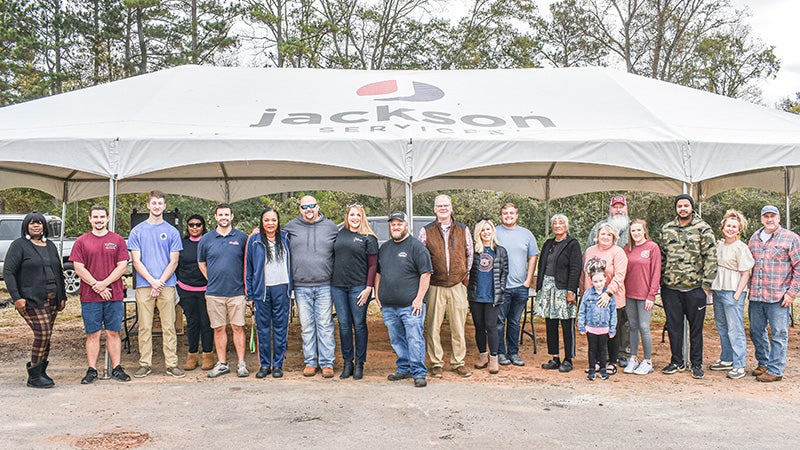History professor talks country music history of Atlanta
Published 12:00 pm Tuesday, April 26, 2022
|
Getting your Trinity Audio player ready...
|
In the 1920s and 1930s, it was Atlanta, and not Nashville, that was the premier recording center for country music. Atlanta had an advantage of becoming the epicenter of country music in the early 1920s but was later overtaken by Nashville and that city today carries the title Music City U.S.A. for its connection to country music.
Dr. Steve Goodson talked about this in a Sunday afternoon virtual program of the Chattahoochee Valley Historical Society (CVHS). A native of Montgomery, Alabama, Goodson is a long-time history professor at the University of West Georgia and an authority on the history of country music in the Deep South. Goodson had earlier made a virtual presentation to CVHS members on the life of Hank Williams, one of Montgomery’s most famous sons.
Atlanta had the lead in becoming the capital of country music in the early 1920s, Goodson explained.
Atlanta was widely known as a modern, progressive city where artists from opera singers to blues artists to early country fiddlers found receptive audiences who listened to radio station WSB, the first mega station in the Deep South. At night, its broadcasts could be heard in the 48 states of the continental U.S. This attracted an early record producer from Missouri named Ralph Preer. He recorded African American artists and country music performers on the Okeh record label. He was turning out 78 rpm records at a recording studio located at 152 Nassau Street in downtown Atlanta.
At the time, radio stations were broadcasting everything live.
They filled up unlimited air time with all kinds of different acts. Some were very good and others were the kind of performances that didn’t come back for a second time. One of the more popular acts was a man named Fiddlin’ John Carson. He was a native of Blue Ridge, Georgia and played a fiddle that had been brought to this country by his Irish ancestors. Listeners loved his fiddle playing, his singing and especially his on-air personality. He quickly became someone in demand for WSB.
In June 1923, Carson went to the recording studio on Nassau Street to put on a 78 Okeh record known as “The Little Old Log Cabin on the Lane.” It was a song that went back to the 1800s and recalled a happy life in a simpler time. People loved it, and the record became the first million-selling hit in country music history.
People also liked the flip side. It was named “The Old Hen Cackled As the Rooster Began to Crow.” Carson made all kinds of bird sounds on the record, and listeners loved it.
“Atlanta was the country music recording center in the 1920s,” Goodson said. “Other major labels came there to record, and people like Jimmie Rogers, the Carter Family and Bill Monroe recorded there.”
Nashville became home to the South’s second mega-station in 1925 when it went on the air.
Edwin Wilson Craig of Nashville-based National Life & Accident Insurance Company started WSM in 1925. The call letters stand for We Shield Millions. It was not just to get across what National Life did but also made the point that the station catered to the interests of average people — the mill workers and the farmers, not just the rich elites. Within the first two months of broadcasting, the station debuted a program that’s still popular today, the Grand Ole Opry. It was so well received that fans would flock to the station to see the live performances in person. The Grand Ole Opry being performed for live audiences is a tradition that continues today.
People liked WSM, Goodson said, because they felt respected and not looked down on the way other media did.
“It was Nashville, and not Atlanta, that became Music City U.S.A. for fans of country music,” Goodson said.
That early recording studio on Nassau Street in Atlanta has an interesting history in its own right. Nassau Street was built in 1912, and by 1923 was teeming with business offices. It was in one such office that Okeh Records brought in some portable recording equipment. Blankets were placed over the windows to improve the acoustics. Compared to the recording studios in Atlanta today it was primitive, but some classic recordings were made there.
Fiddling music had been popular in Atlanta for some time. Fiddlers like John Carson would perform before large crowds of people in the same auditoriums where opera singers and famous symphonies had played to high-brow audiences. What was then known as hillbilly music would bring together textile workers from places like Cabbagetown and wealthy people from north Atlanta and helped sustain the city as a diverse, welcoming place.
When it was recorded in the summer of 1923, Fiddlin’ John Carson’s “The Little Old Cabin at the End of the Lane” wasn’t an instant hit. Reviewers didn’t like the acoustics. Record promoter Polk Brockman thought he was taking a chance when he made 500 copies of it. They sold out so fast in Atlanta alone that he arranged for 10,000 more to be made, and they sold out fast. It went on to sell over a million records.
More than the popularity of one record, Fiddlin’ John Carson and Okey Records helped make a new genre of music in the U.S. What had been dismissively called hillbilly music was now known as country music and was loved by everyone from those who were still living on the farm to urban transplants.
Fiddlin’ John sold lots of records, but he was the first to admit that it was his live performances on radio that made him popular. Live programs and entertainment would remain the staple of radio until the mid-to-late 1940s when recordings began to dominate the air time.
Although a major Civil War objective for the North, Atlanta was not a place of any appreciable size. It had less than 10,000 people in 1860. But that’s where the railroads crossed, and that’s what has always made it significant. The interstate highways and the airlines connect there today.
Atlanta started to boom after the war.
“It grew with amazing speed,” Goodson said. “By 1880, the population had grown to 37,000 and to over 200,000 by 1920.”
Starting at the Georgia Capitol, if one draws a circle some 50 miles in each direction, there’s five million people living inside that circle today.
In the 1880s, Henry Grady of The Atlanta Constitution was nationally known as a proponent of the New South. Atlanta was called the Gateway of the South and was widely seen as a place of much diversity and acceptance.
“Atlanta was a place of can-do optimism and constant growth,” Goodson said.
Other cities in the South took a dim view of this. Newspapers in Charleston loved to take shots at Atlanta, calling it “too Northern, too cosmopolitan and non-traditional.”
Atlanta of the late 1800s was a place for African American scholarship and business.
“It’s interesting to research the history of Atlanta to see its parallels and contrasts,” Goodson said. “You can see this in music.”
There were social elites who wanted to promote the city as a bastion of fine music. In the early 1900s, famed opera stars Enrico Caruso and Geraldine Farrar performed there, accompanied by the Dresden Symphony. On that same stage, though, a fiddling convention might take place the next week.
“Atlanta wanted to do what was the best, what was on the cutting edge,” Goodson said.
The city hosted a much-acclaimed Great Southern Music Festival in 1909 and the next year started hosting performances by the New York Metropolitan Company, something that continued into the 1970s.
The site on Nassau Street where the Okeh Records studio was located is the site for a 21-story Magaritaville Hotel and Restaurant. In an attempt to save the building, an effort was made to determine its exact location. There were several abandoned buildings that could have been it.
“It was identified from a newspaper ad that listed it at 152 Nassau Street,” Goodson said.
Goodson was able to see the building before it was torn down in November 2019.
A historical marker will be going up to mark the location.
When a fight to save the building was underway, Goodson was interviewed by CNN and PBS about its significance.
After it was a recording studio, the building at 152 Nassau Street served a variety of purposes over the years. Various businesses were located there and a variety of law firms had offices there. At one time, it was a Gone With the Wind museum.
“I remember visiting that museum on a trip to Atlanta,” Goodson said. “Like the building and the museum, it’s all gone with the wind now, but American popular music and country music has swept the world.”
In a question-and-answer session that followed the presentation, CVHS member Dr. Mac Holderfield complimented Goodson for his talk.
“The 1920s was an extraordinary period for cultural development in the U.S.,” he said. “People were brought together by recorded music. They loved haring songs and singing along with them.”
Goodson noted that the newspapers of the day were quick to split such trends.
“They could see that fiddling conventions appealed to a broad cross-section of the population, not just working-class Southerners,” he said.
Goodson noted an Alabama connection to the building that was torn down at 152 Nassau Street.
“The bricks were made in Alabama,” he said.




